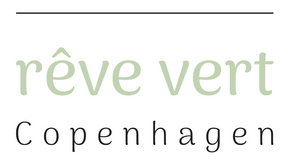LINEN
Linen is a textile made from the fibers of the flax plant. Linen is laborious to manufacture, but the fiber is very strong, absorbent, and dries faster than cotton. Garments made of linen are valued for their exceptional coolness and freshness in hot and humid weather. This also makes linen the perfect material for bed linen and towels.
Linen has been used by humans for hundreds of years, it can he traced all the way back to the ancient Egyptians, who valued linen so much they used it as currency.
Just like cotton, linen comes from a natural source, a plant. Linen is created of the fibers that come from the flax plant, that grows all over the world.

Blooming field of flax plants
Linen fabric has been used for table coverings, bed coverings and clothing for centuries. The significant cost of linen derives not only from the difficulty of working with the thread, but also because the flax plant itself requires a great deal of attention. In addition, flax thread is not elastic, and therefore it is difficult to weave without breaking the threads. Thus, linen is considerably more expensive to manufacture than cotton.
It is smooth, making the finished fabric lint-free, and gets softer the more it is washed. However, constant creasing in the same place in sharp folds will tend to break the linen threads. This wear can show up in collars, hems, and any area that is iron creased during laundering. Linen's poor elasticity means that it easily wrinkles.
Linen should not be dried too much by tumble drying, and it is much easier to iron when damp. Linen wrinkles very easily, nevertheless, the tendency to wrinkle is often considered part of linen's particular "charm", and many modern linen garments are designed to be air-dried on a good clothes hanger and worn without the necessity of ironing.
How linen is produced
To generate the longest possible fibers, flax is either hand-harvested by pulling up the entire plant or stalks are cut very close to the root. After harvesting, the plants are dried and the seeds are removed.

Sheaf of the harvested flax with stems, seed capsules and roots
The retting process now begins, to loosen the fibers from the stalks. Retting consists of emerging the stems in tanks and pools, or directly in the fields. This is a process which uses bacteria to decompose the pectin that binds the fibers together.
After retting, the stalks are ready for scutching, which takes place between August and December. Scutching removes the woody portion of the stalks by crushing them between two metal rollers, so that the parts of the stalk can be separated.
The fibers are now removed, the remaining parts of the plant will be used for other purposes such as linseed oil, the whole plant is used so there is no waist.
The fibers are now ready for the heckling process, the flax is pulled through heckling combs which parts the fibers and makes them straight and clean.
After heckling the flax is ready to be woven into beautiful linen.
Sources: Our suppliers, research & Wikipedia



Leave a comment